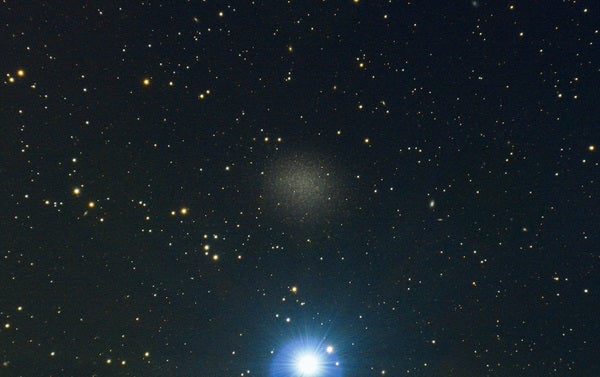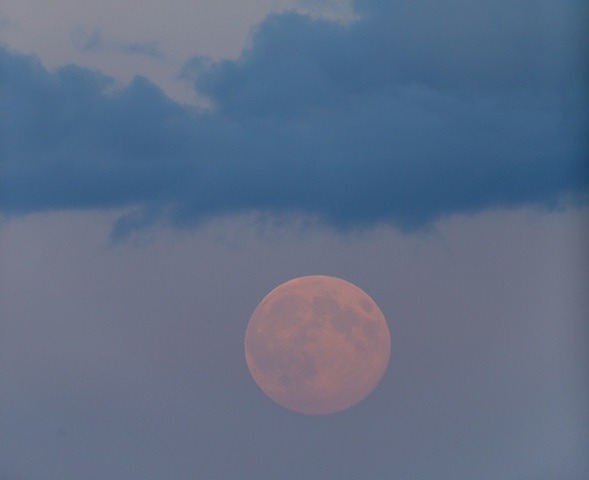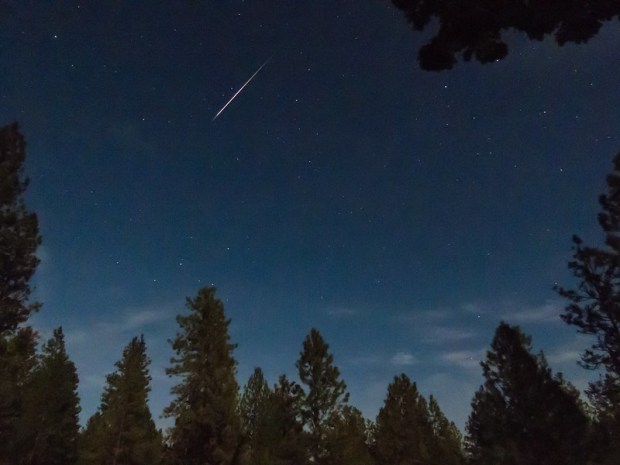As the name implies, Leo I resides in the zodiacal constellation Leo the Lion. This deep-sky target is a great example of a dwarf spheroidal galaxy. Such objects are faint, have little dust, and are not forming new stars. Usually, they are found as satellites orbiting larger galaxies — more than 30 of the 59 confirmed satellites of the Milky Way are dwarf spheroidal galaxies.
Leo I lies approximately 820,000 light-years away, which makes it the fourth most distant satellite of our galaxy. It has a diameter on the order of 2,000 light-years and a mass of roughly 25 million Suns. American astronomer Albert George Wilson discovered it in 1950 while examining a photographic plate taken by the 48-inch Schmidt camera at Palomar Observatory.
Astronomers think Leo I may be the youngest of the Milky Way’s dwarf spheroidal galaxies. None of its stars seem older than about 10 billion years, and most of them formed between 2 billion and 6 billion years ago. And no stars (or only an extremely small number) have formed in the past billion years. That may be because around a billion years ago, Leo I made its closest approach to the Milky Way. Our larger galaxy’s gravitational influence may have stripped away all the gas available to create stars.
Although Leo I is easy to find, it’s not all that easy to observe. To locate it, point your telescope 20′ north of magnitude 1.3 Regulus (Alpha [α] Leonis). Unfortunately, the glare from that star (especially if the humidity is high) can mask the subtle glow of Leo I, which has a magnitude of 11.2. That dim light is further reduced, spread over an area measuring 10′ by 7′.
The best strategy is to place Regulus just outside the field of view to the south. Start with a low-power eyepiece and increase the magnification to get the best view.
Make sure to explore Astronomy’s full list of 101 cosmic objects you must see. New entries will be added each week throughout 2022.










